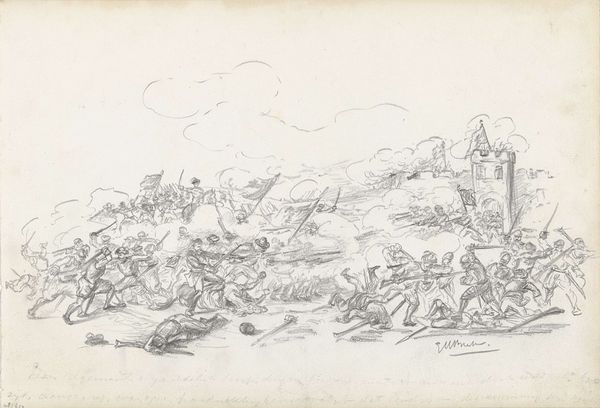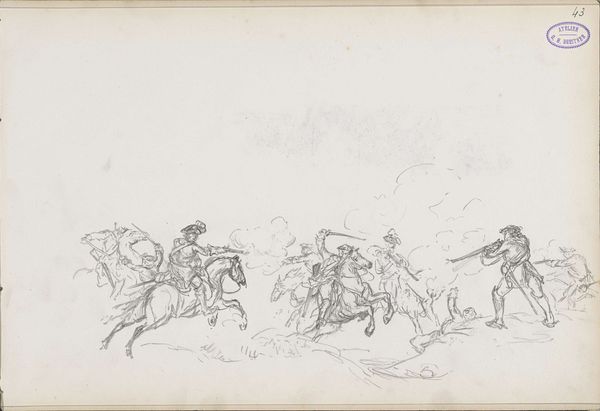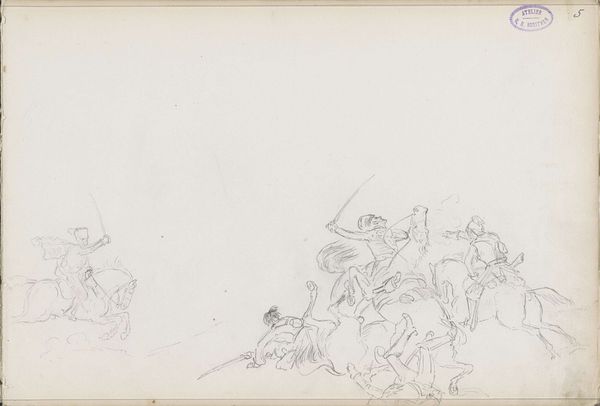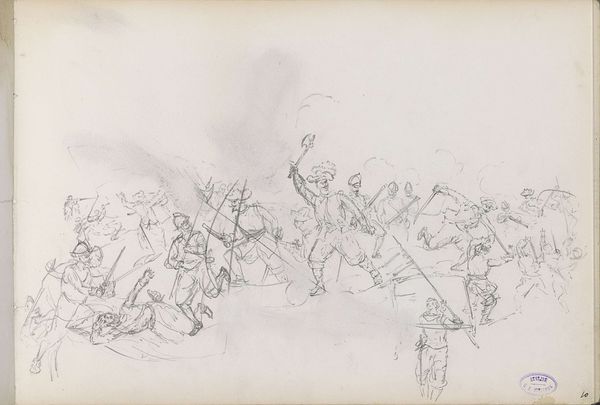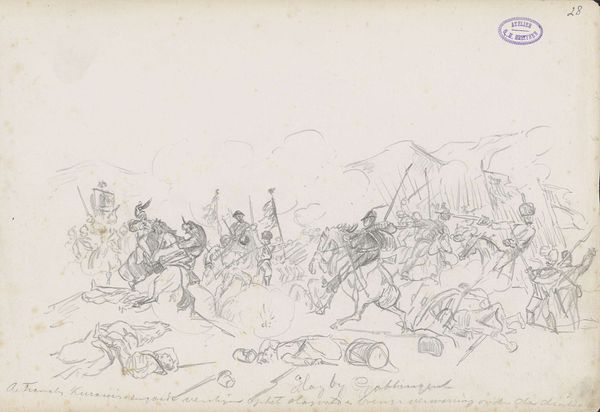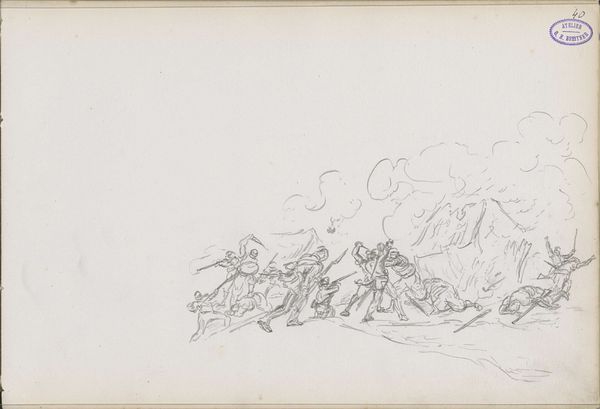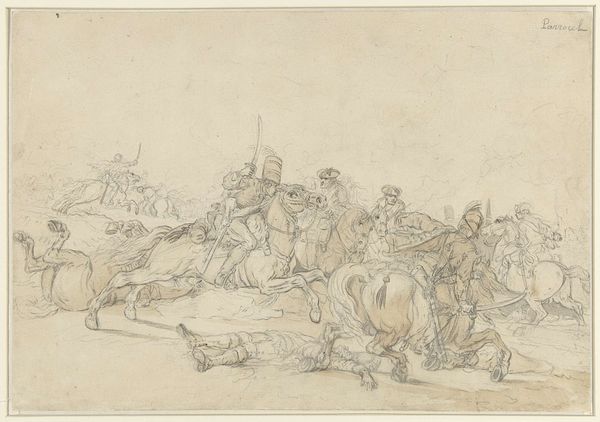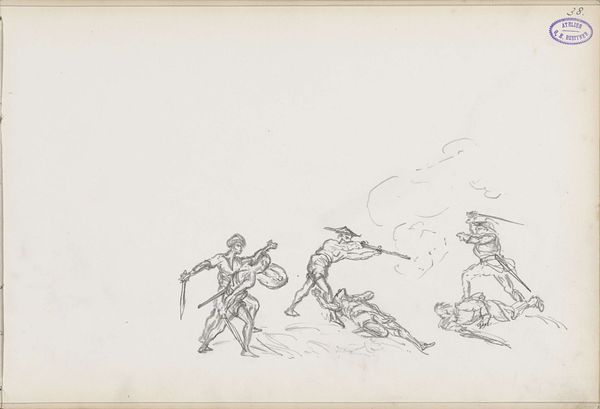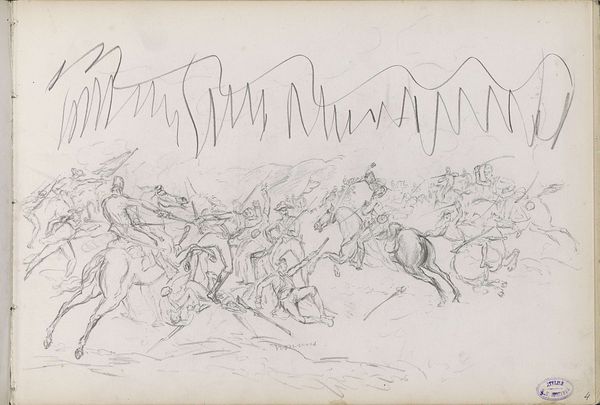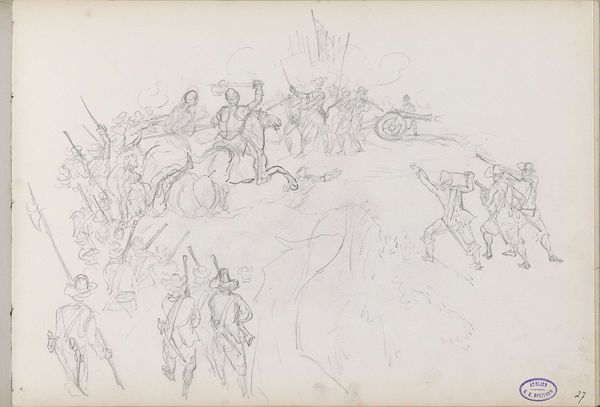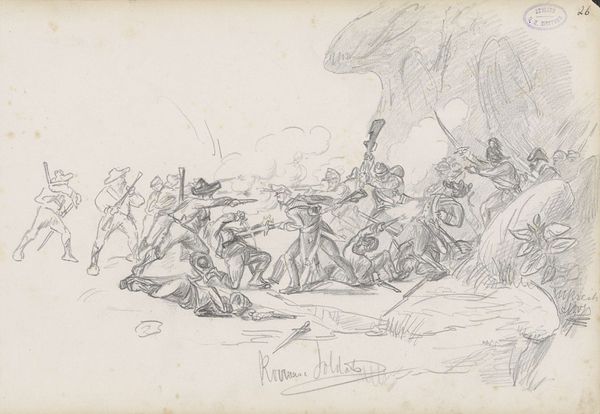
drawing, pencil
#
drawing
#
ink drawing
#
narrative-art
#
pen sketch
#
figuration
#
pencil
#
academic-art
#
realism
Copyright: Rijks Museum: Open Domain
Curator: Here we have George Hendrik Breitner's "Strijdende soldaten met geweren," or "Fighting Soldiers with Rifles," created sometime between 1872 and 1879. It's a compelling drawing, currently held in the Rijksmuseum. Editor: My immediate reaction is one of chaotic energy. The sketched figures, with their frantic movements, evoke the brutal reality of conflict. The lack of distinct detail almost amplifies the overall sense of frenzy. Curator: It's crucial to recognize Breitner's position within the art world of his time. As a proponent of Realism, he sought to depict scenes truthfully, steering clear of romanticized depictions of warfare that were prevalent. The work also invites analysis through the lens of militarism and masculinity, exploring how those concepts intersect within specific historical contexts. Editor: Absolutely. Note how Breitner uses linear perspective, creating receding planes of figures, all armed and seemingly charging into battle. Spears and muskets become visual emblems of aggression. What symbolic potency do these images carry, extending beyond this immediate depiction? Curator: The act of drawing itself becomes significant. Breitner, through these hurried lines, emphasizes the immediacy of the moment, rejecting academic conventions that often sanitized or glorified combat. He is critiquing power structures that send men off to war. Editor: I find it so compelling how the looseness of the sketch emphasizes the vulnerability of each individual, stripped of identity and subsumed by this machine of war. What visual cues did Breitner pull from historical depictions of conflict, and what was he rejecting? Curator: He actively distanced himself from traditional history painting, resisting narratives of heroism. The sheer density of figures packed into the composition is telling. There's no clear protagonist, only a collective mass caught in the throes of violence. He depicts the anonymity of warfare. Editor: And I find myself considering how this image, though seemingly of a specific historical moment, speaks to our continuing fascination with, and horror of, conflict. These basic visual components speak to enduring and ever-shifting cultural attitudes toward violence. It provides an eerie visual connection to contemporary warfare. Curator: This really illuminates how the piece operates as a counter-narrative to more heroic or romantic representations, inviting important discussion. Editor: Indeed, Breitner's drawing serves as a stark and unflinching visual commentary, prompting reflections on the legacy of conflict and its ongoing relevance.
Comments
No comments
Be the first to comment and join the conversation on the ultimate creative platform.

